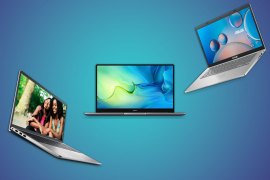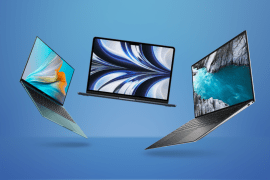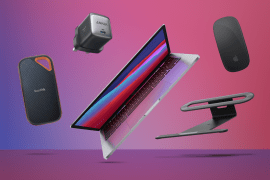Google’s new Chromebook Pixel makes a MacBook-like shift to USB Type-C
But it’s not the only port. Also, there’s a “Ludicrous Speed” version of the Pixel with higher-end specs

Not wanting to be outdone by Apple’s sleek new MacBook, Google has unveiled its own super-sharp next-gen laptop. And if you wondered when USB Type-C would become the industry standard – well, it’s already happening.
Indeed, the new Chromebook Pixel uses a USB Type-C connector for charging, and Google says the higher-end laptop can run up to 12 hours, with a 2-hour charge available after just 15 minutes of being plugged in. Google says that more Chromebooks and also Android devices will use Type-C soon.
Unlike the MacBook, the Chromebook Pixel actually has two of the Type-C ports: one on each side of the laptop. However, it also has two standard USB 3.0 ports on the left side, so you won’t need to buy a dongle adapter to use multiple peripherals with the device, or convert your older cables. It also has an SD card reader and a headphone jack.
Elsewhere, the laptop maintains the touchscreen size (12.85in) and resolution (2560×1700, or 239 PPI) of the original, but makes some spec boosts within, with the base model featuring an Intel Core i5 processor running at 2.2Ghz with 8GB RAM, plus it has Intel HD Graphics 5500 and 32GB flash storage within. That model sells for US$999 (about £670).
If that’s not enough for you, there’s an LS version – which Google says stands for “Ludicrous Speed” (yes, really) – which bumps up to a Core i7 at 2.4Ghz with 16GB RAM and 64GB flash storage for US$1,299 (about £870) that should suit your needs. After all, it’s a Chromebook: it’s not designed for ultra-high-end, graphically-intensive work.
Both versions are available now via the new Google Store, which now serves as the destination for all Google hardware needs. The Play Store remains for apps and other media, of course.
Given that it ran on the somewhat-limiting Chrome OS and cost over £1,000, we weren’t all that enamoured with the first Chromebook Pixel – it felt more like a proof-of-concept than an actual useful product. Hopefully this new edition will add a little extra real-world desirability and performance – we’ll be getting our hands on one to find out as soon as possible.
[Source: Google]
Read More › The best cheap Chromebook laptops



